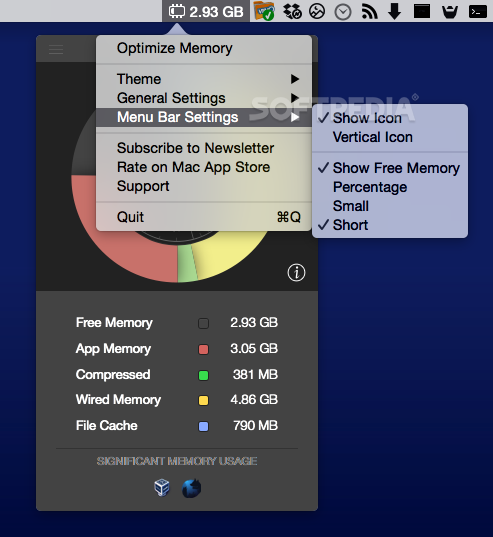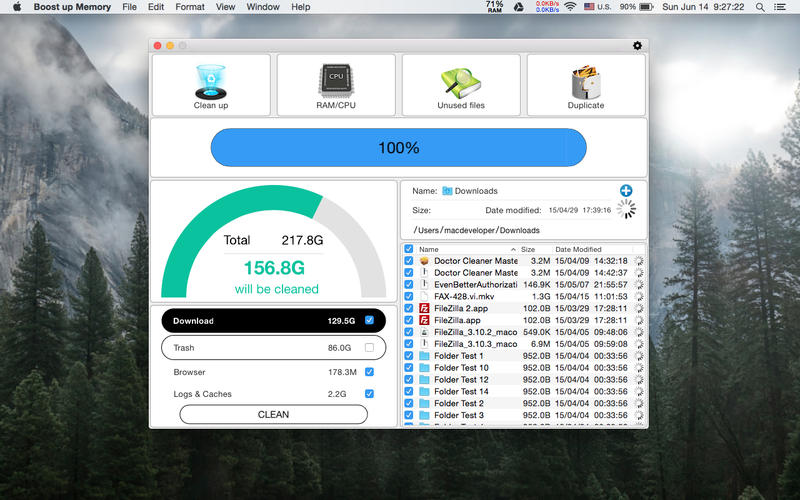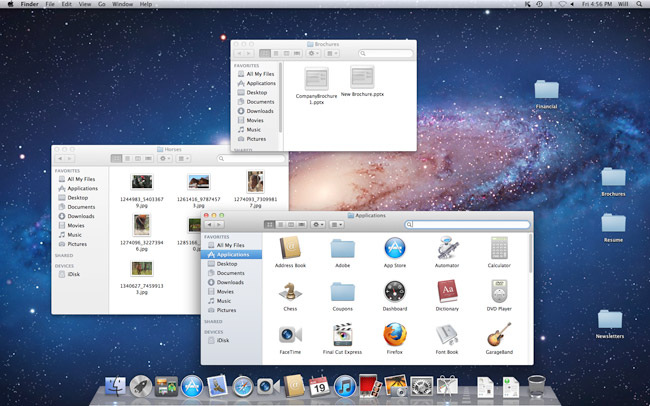

OSX FREE MEMORY MAC OS X
So low free memory is something to be happy about! Your RAM isn’t sitting there being wasted – Mac OS X is utilizing it for your benefit. And this is almost always a good thing, since it can increase speed and responsiveness. As previously mentioned, active memory can get released to inactive memory when it’s no longer in use. Most people look at the number next to free memory and think a low amount means they need more RAM. Now that we all better understand how our RAM is being used, it’s much easier to determine whether or not more system memory is needed.
OSX FREE MEMORY UPGRADE
How do I know if I should upgrade my Mac’s RAM? When RAM is running low or needs to be shuffled around to the hard drive to accommodate higher priority data, this number increases. The amount of information moved from RAM to the hard drive since the last system startup. Every time you open an application or file, this number goes up. The amount of information moved from the hard drive to RAM since the last system startup. I quit iPhoto, did some other stuff, and came back to it a few minutes later. I just ran a quick test myself to illustrate this point: After a system restart, I opened iPhoto and it took 3 Dock icon bounces to launch. Why? Because the computer is not reading everything from its slow hard drive again. This way, when you open iPhoto next time it will load up faster than before. Some of the information that was stored in active memory by this application will be moved to inactive memory. Let’s say you were working in iPhoto and decide to quit it.

Inactive memory is basically a handy storage space for convenient access to your most used tools. One of the great things about Mac OS X’s memory management system is that it never stops working for you.

But not all of it will go straight back to free memory… some goes to the next category. Quit one or two of these applications and active memory will shrink. If you’ve got Safari, GarageBand, iTunes, and Photoshop all going at the same time, your active memory is likely fairly high. Information currently in use or very recently used.

The more memory you have, the more your Mac wants to use it! For example, a Mac with 1GB of RAM may show 400MB of wired memory, while a Mac with 4GB of RAM may use 700MB. An interesting thing to note about wired memory is that it scales based on how much total system memory is installed. This stuff is basically frozen – it allocates its space and never moves to the hard drive or gets replaced with user-level data when RAM becomes scarce. It is completely free for the system to use when needed.Ĭritical information stored in RAM by the system, its kernel, and some key application components. Now that we have that out of the way, let’s continue!Īs one might expect, this is the RAM that is sitting there with nothing to do. Of course, this slows a Mac down considerably, so it generally only occurs as a last resort when the system runs out of RAM. One thing to mention beforehand, though, is that information stored in RAM sometimes gets temporarily moved to and from the hard drive when there isn’t enough RAM available. It’s very neatly organized, as you will soon find out. When a Mac’s system memory is being used, OS X doesn’t just lump it all together. If you’ve ever wondered what all of this means and how it affects the speed & overall performance of your Mac, read on! A vocabulary overview That’s because the operating system categorizes system memory (commonly referred to as RAM) in a number of different ways, rather than just “used” and “free.” There’s a bit more going on behind the scenes, so we’re left to decipher the following terms: free, wired, active, inactive, page ins, page outs, etc.
OSX FREE MEMORY FOR FREE
The same thing goes for free Dashboard widgets like iStat Pro. Mac users: Have you ever wondered what all that system memory stuff in the Activity Monitor was all about? Understanding the terminology – free, wired, active, and inactive RAM – can help you decide if your Mac has enough memory.Ī quick peek at Mac OS X’s Activity Monitor to see how your system is performing can generate more questions than answers.


 0 kommentar(er)
0 kommentar(er)
